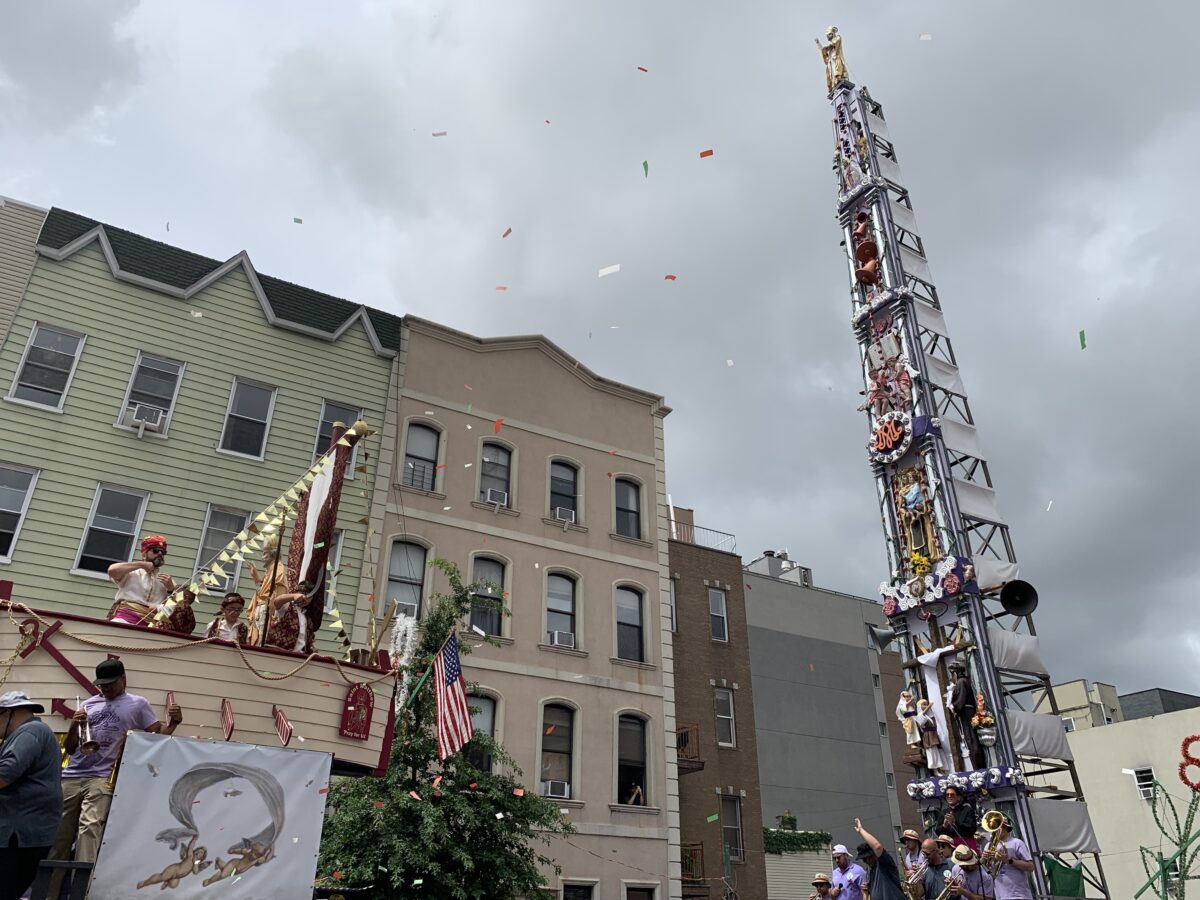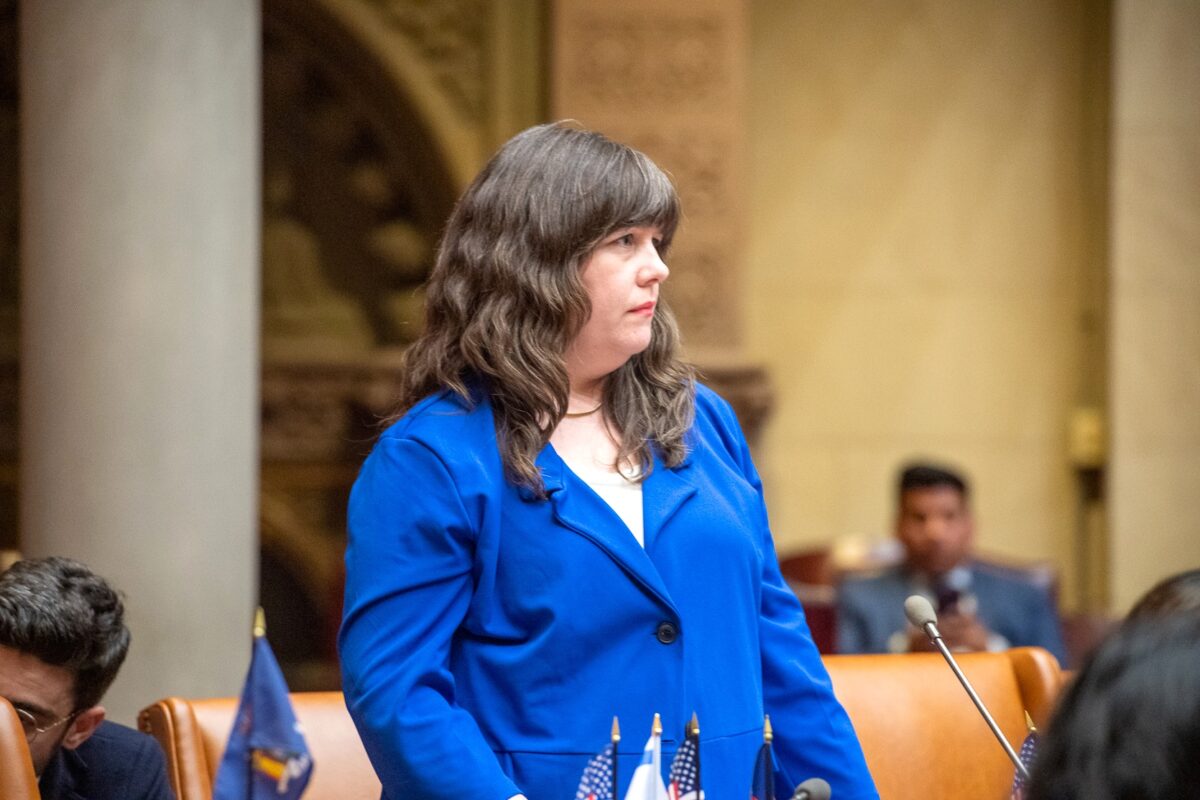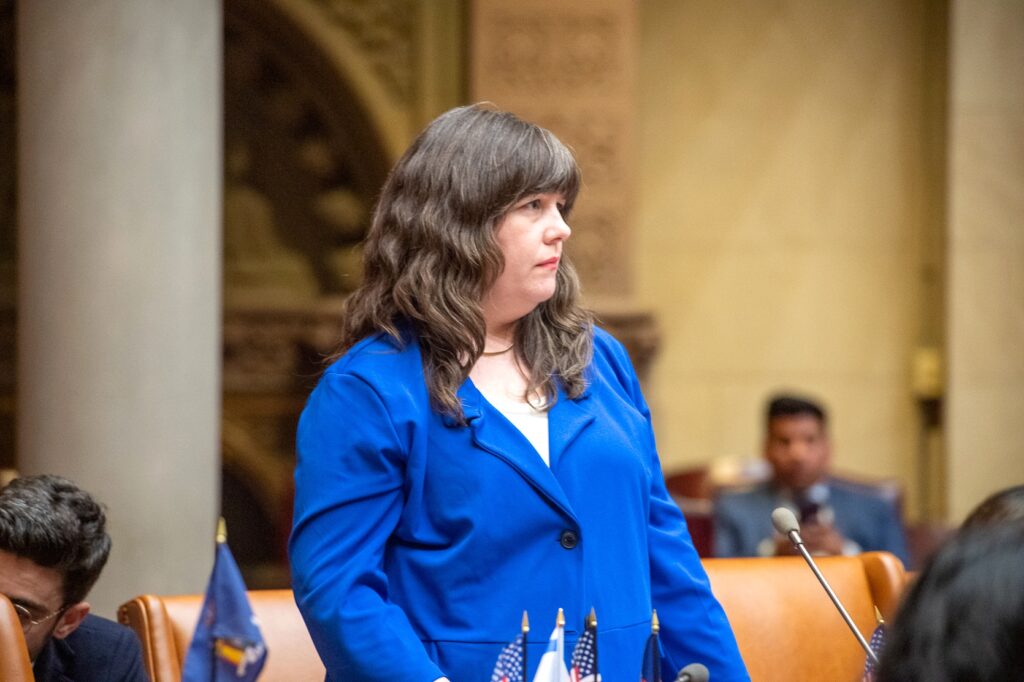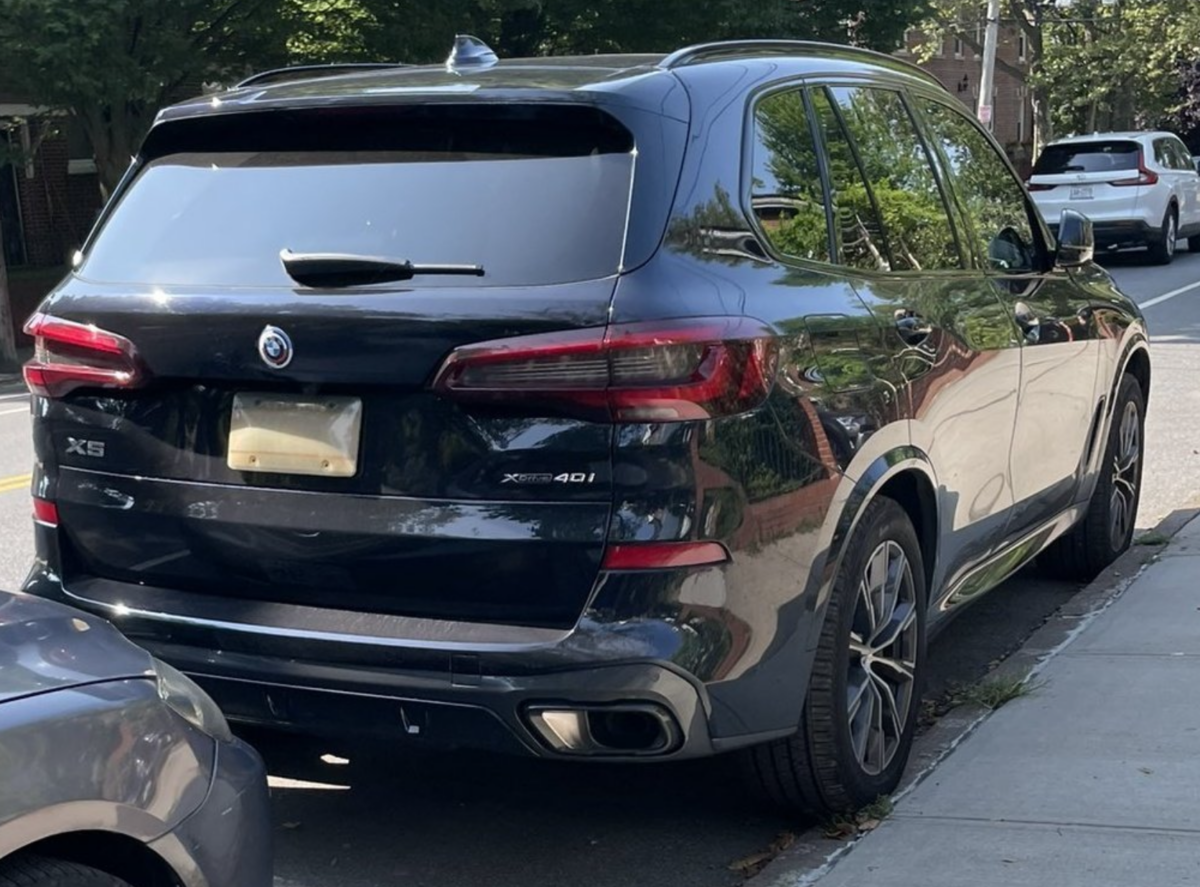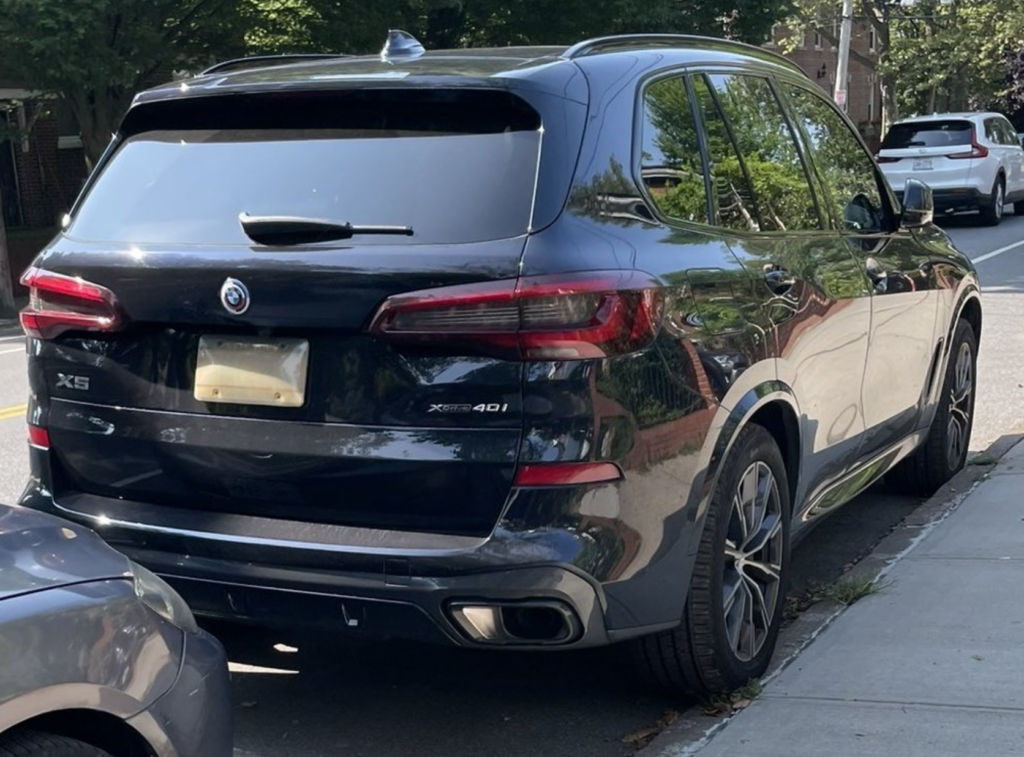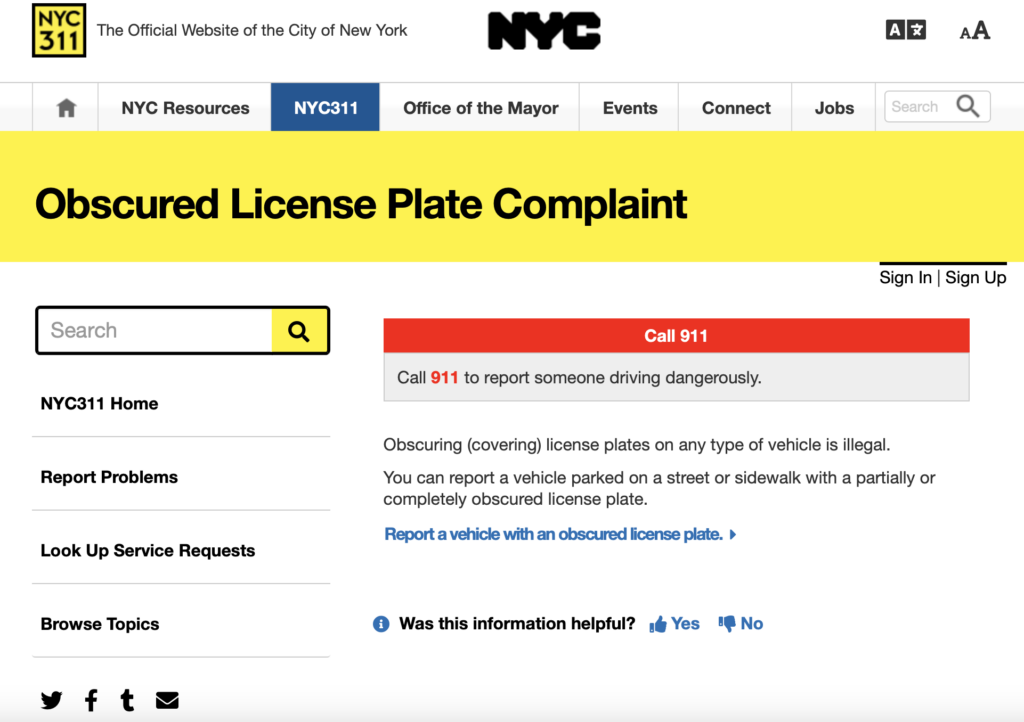Our Lady of Mount Carmel Feast Returns to Williamsburg For Its 136th Year
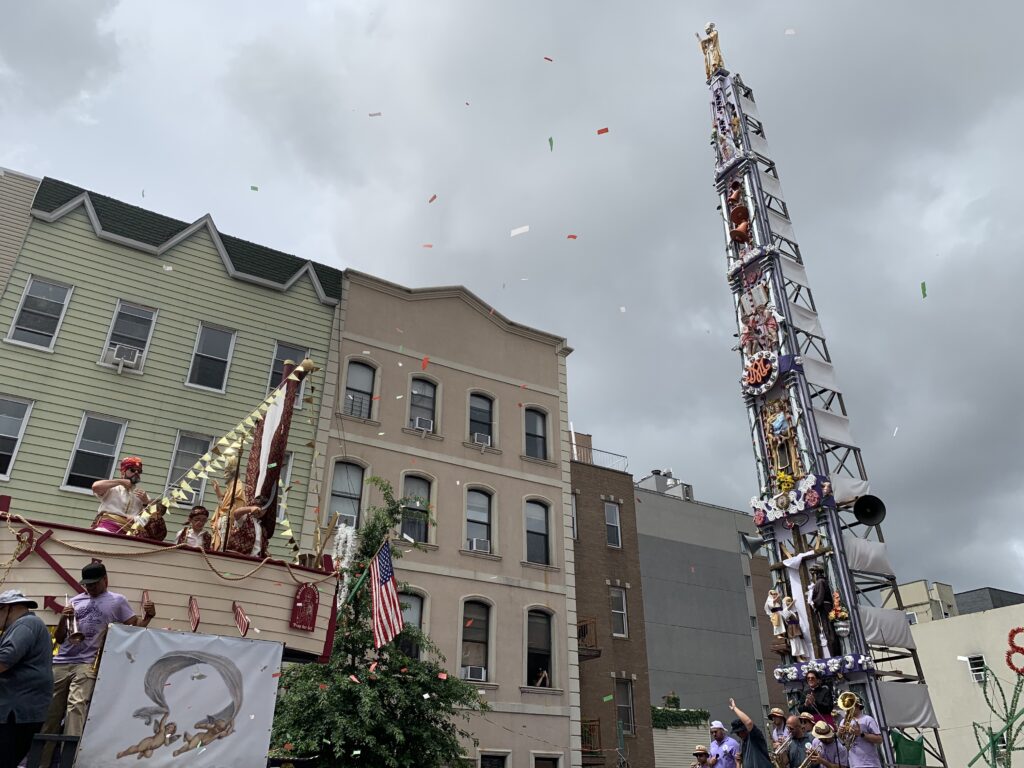
The Giglio stands before the crowd.
By Carmo Moniz | news@queensledger.com
Hundreds gathered in Williamsburg on Sunday to celebrate one of the oldest existing Italian American traditions, the Our Lady of Mount Carmel and San Paolino di Nola Feast.
The 12-day-long feast features plenty of food stands, carnival-style games and community traditions, including the lifting of the Giglio — an 80-foot-tall and 7,000 pound structure decorated with statues of saints and flowers.
Anthony Croce, who guided the Giglio through the festival, said that the structure honors an event dating back to 406 A.D.
“It was wonderful, it was one of the greatest days of my life,” Croce said. “It’s a show so I’m glad they’re happy and they’re cheering.”
The festival is a celebration of the return of San Paolino di Nola thousands of years ago after he was taken on a pirate ship. The saint had offered himself in exchange for the freedom of a young man captured on the ship, and was later released when word of his selflessness reached a Turkish Sultan. According to the legend, the residents of Nola welcomed him with lilies when he returned, marking the beginning of an annual tradition.
Just before the event began, Monsignor Jamie Gigantiello, a pastor at nearby Our Lady of Mount Carmel Church, led the crowd in prayer, after which a band played the national anthem.
“Summer doesn’t begin in Williamsburg until the opening of the Feast of Our Lady of Mount Carmel,” Gigantiello said in a statement. “The highlight of the Parish of Our Lady of Mt. Carmel is our feast! It is the pulse and showcase of our parish family.”
This Sunday’s celebration involved around 100 men lifting the structure and moving it through the streets of the festival in what is called the “Dancing of the Giglio.” Another, shorter structure featuring a boat was also carried through the crowd, and the two met at the intersection of North Eighth Street and Havemeyer Street.
Nick and Andrew Conte, two brothers who helped lift the Giglio this year, said that they have been taking part in the tradition for many years.
“Our dad grew up around here so we’ve been doing it since we were big enough, and he’s been doing it since he was a kid,” Nick said. “It’s just tradition, family tradition, family, friends, every year it’s a good event to look forward to in the summer.”
Louis Passaro, who was also on this year’s lifting team and attended the festival with his daughter, said that he has been lifting the Giglio for 42 years. He said he had been unable to take part in the lift in the last two years due to a hip injury, but was finally able to return this year.
“My daughter loves it, and we’re going to keep the tradition going,” Passaro said.
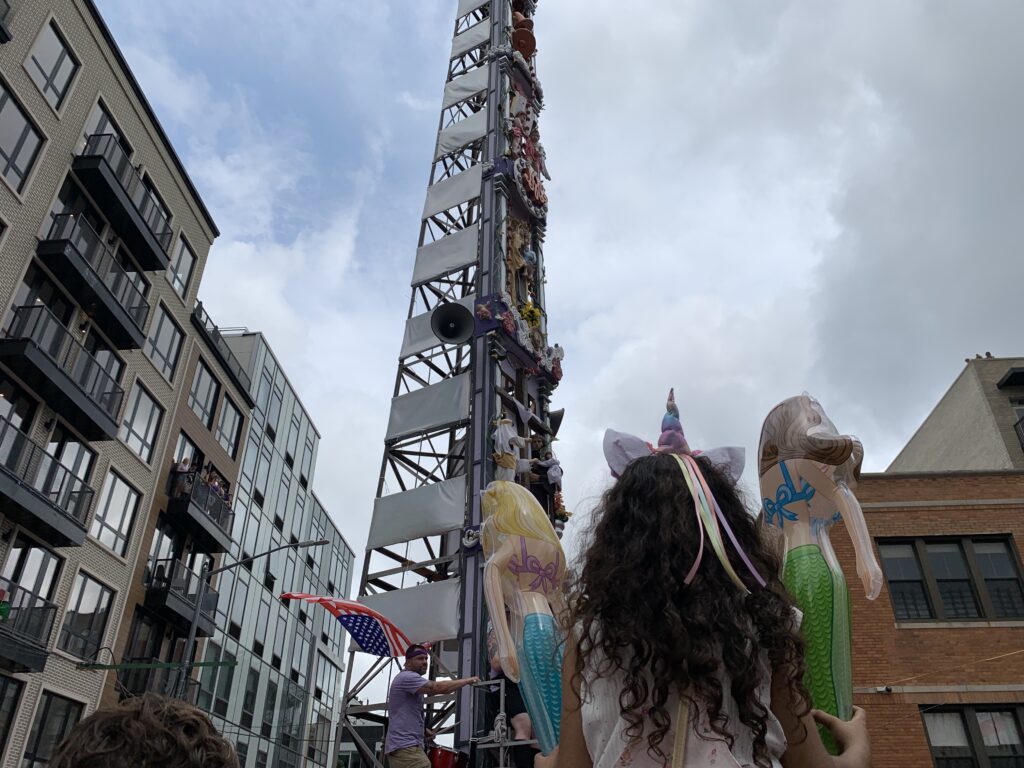
A child looks on as the Giglio makes its way through the crowd.
Musicians and singers were aboard each structure, putting on a show for the crowd as they made their way to their destination. The afternoon saw scattered rain hit the festival, but the performers and crowd continued the celebration through the bad weather.
Other attendees were newer to the festival, like longtime Brooklyn resident Gil Moreno. Moreno had never attended the festival before this year, but said that he had been able to see the Giglio before all the way from the highway, due to its height.
“It’s been at least 30 years and finally I made it,” Moreno said. “The atmosphere is good there’s lots of food — too much food I think — it’s definitely a good time.”
Debbie Ferrara, a Williamsburg resident whose grandfather brought the Giglio tradition from Nola, said that she attends the festival every year and that people come from around the world to take part in the celebration.
“It gets better and better as you age, it’s like a fine wine,” Ferrara said. “It’s who we are, it’s our lifeblood. This is our Christmas in July.”



